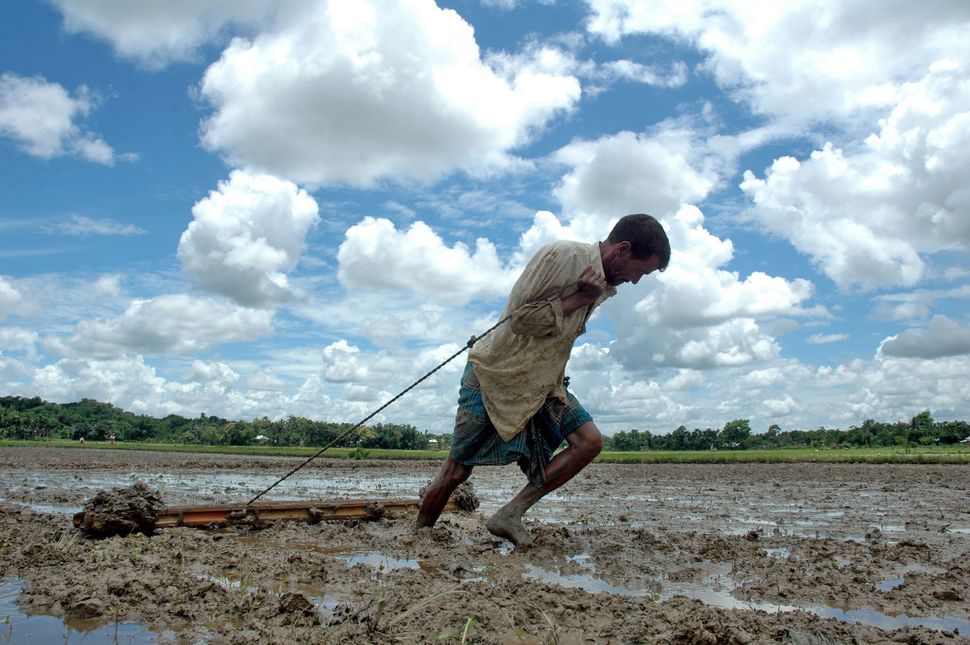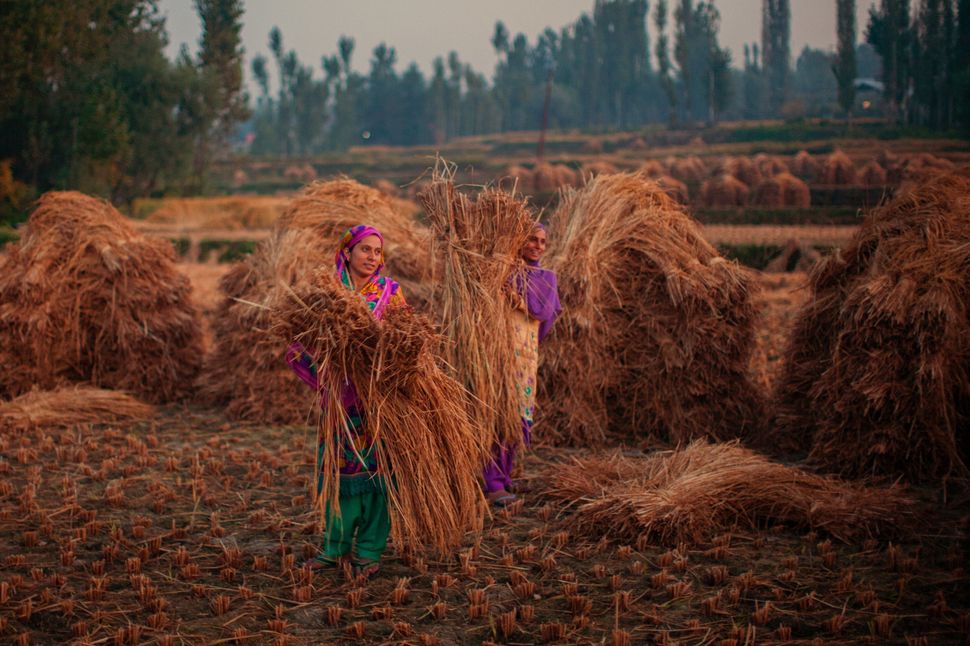A New Farming Technique Using Drastically Less Water Is Catching On
But not everyone is on board.

Filipino melon grower Denis Miguel was intrigued to hear of a young Indian farmer who in 2011 had broken the world record for growing rice by using an unconventional method of cultivation that needed only half as much water and one-tenth as many seeds but resulted in spectacular yield increases.
Miguel, from Isabela province, had never grown rice before, but he teamed up with a local rice farmer to try out the system. Last year, he reaped the equivalent of 10.8 tons of rice per hectare, or four times as much rice as the farmer usually grew on that land.
He was astonished. “A harvest of 10.8 tons per hectare on a rain-fed farm which used to produce only 2.5 tons was a great success. I was a newbie rice farmer. It was my first attempt at rice farming. It was an eye opener to all the people who were witness,” he said in an email.
Miguel is not alone. Reports from China, India, Southeast Asia and Africa suggest that average yield increases of 20 to 50 percent are regularly being achieved by farmers adopting the “system of rice intensification” (SRI), which aims to stimulate the root system of plants rather than trying to increase yields in the conventional way by using improved seeds and synthetic fertilizers.
Rice is the major staple crop of nearly half the world and is primarily grown by small farmers. Seedlings are traditionally planted in large clumps in flooded fields. One kilogram of rice typically requires about 660 gallons of water.
SRI, in contrast, involves the careful spacing of fewer but younger plants, keeping the topsoil around the plants well-aerated by weeding, using manure and avoiding flooding.

What was a grassroots movement spreading slowly by word of mouth since it was developed by French priest Henri de Laulanié in Madagascar in 1983 is now growing fast as regional governments in China and India join anti-poverty groups like Oxfam to back the method.
According to the SRI International Network and Resources Center at Cornell University, an estimated 10 million rice farmers in 60 countries have adopted SRI.
“It has the potential to reduce the amount of water, money and labor that farmers in developing countries need to spend. Time and again, farmers have seen improvements in yield, profitability and resilience,” says Norman Uphoff, professor of international agriculture at Cornell.
The idea of using less to gain more is seen as an important innovation for adapting farming to climate change and a way to increase yields at a time when human populations are growing fast but traditional plant breeding and genetically modified techniques have failed to increase yields more than a few percentage points, says Uphoff.
In Bihar, one of India’s poorest states, more than 335,000 hectares of rice are grown using SRI methods. Scientist Anil Kumar Verma from the rural nongovernmental organization Pran and the state government have led a push to develop new weeding tools to help farmers and yields have increased dramatically.
“SRI is changing the life of many farmers. Not only is it addressing food security problems, it is also emitting less carbon, which adds to global warming,” Verma says.
The new way to grow rice is proving most popular in water-stressed countries, says Tavseef Mairaj Shah, a Ph.D. researcher at Germany’s Hamburg University of Technology. “Rice growing in Kashmir largely depends on irrigation systems that draw water from the river Jhelum. But climate change is leading to drier winters, untimely rains, and warmer summers.”

“SRI promises to be a viable alternative, not just from the water-savings perspective but because it offers better yields and soil conditions. Different studies, both at the experimental level and farmer-participative level, have shown that SRI improves yields with less water,” Shah adds.
Some academics, the global seed industry and the international community have rejected reports of “fantastic” yields, accusing farmers of falsifying records and researchers of carelessness and “non-science.” But more than 600 articles, collated by SRI International at Cornell University, have shown benefits.
“The last published [academic] critique of SRI was in 2006,” Uphoff says. “There is nothing more to prove. The original hostility has gone. It may have been linked to the fact that SRI came from the grassroots and not the well-resourced global agricultural industry, which for 50 years has invested heavily in genetics, mechanization, improved seeds and the use of inorganic fertilizers and pesticides.”
But, Uphoff says, the early opposition has resulted in comparatively little scientific research being conducted into SRI and a slow uptake by funders. “SRI was made controversial within the academic and donor communities. Donors have been reluctant to get involved although there are a variety of initiatives at the country or regional level,” he says.
Large donor agencies such as the Bill and Melinda Gates Foundation say they prefer to invest in high-performance seeds and genetically modified technologies.
“[We fund] investments in rice breeding and genetics because we believe innovations in these areas have the greatest potential to empower smallholder farmers and lift their families out of poverty. We don’t currently invest in rice crop management research,” said Gina Ivey, head of global policy for agricultural development with the Gates Foundation.
Attitudes are changing, however. In 2017, SRI was endorsed by the science journal Nature and the United Nations, and the World Bank has begun to promote it in India and Egypt.
“Clearly SRI is one of the technology options that has the potential to increase paddy yields for small farmers. We have invested in scaling up SRI systems in rice in both Bihar and Tamil Nadu [states] and based on our experience have observed that there is potential of more than 25 percent increase in the yield [and a] 64 percent increase in output per unit of water for SRI,” says Vinay Kumar Vutukuru, a World Bank senior agricultural specialist.
Uphoff calls for governments to study the experiences of grassroots farmers: “The principles of SRI can be applied to many crops. It is a genie that can no longer be stuffed back into the lamp. We could have accomplished so much more for farmers, consumers and for the environment if we had even some very modest support [from international donors] and hadn’t had to rely on personal resources and a lot of volunteered effort.”
For more content and to be part of the “This New World” community, follow our Facebook page.
HuffPost’s “This New World” series is funded by Partners for a New Economy and the Kendeda Fund. All content is editorially independent, with no influence or input from the foundations. If you have an idea or tip for the editorial series, send an email to thisnewworld@huffpost.com
https://www.huffingtonpost.com/entry/farming-technique-using-drastically-less-water-is-catching-on_us_5af41876e4b0859d11d0ae35

No comments:
Post a Comment